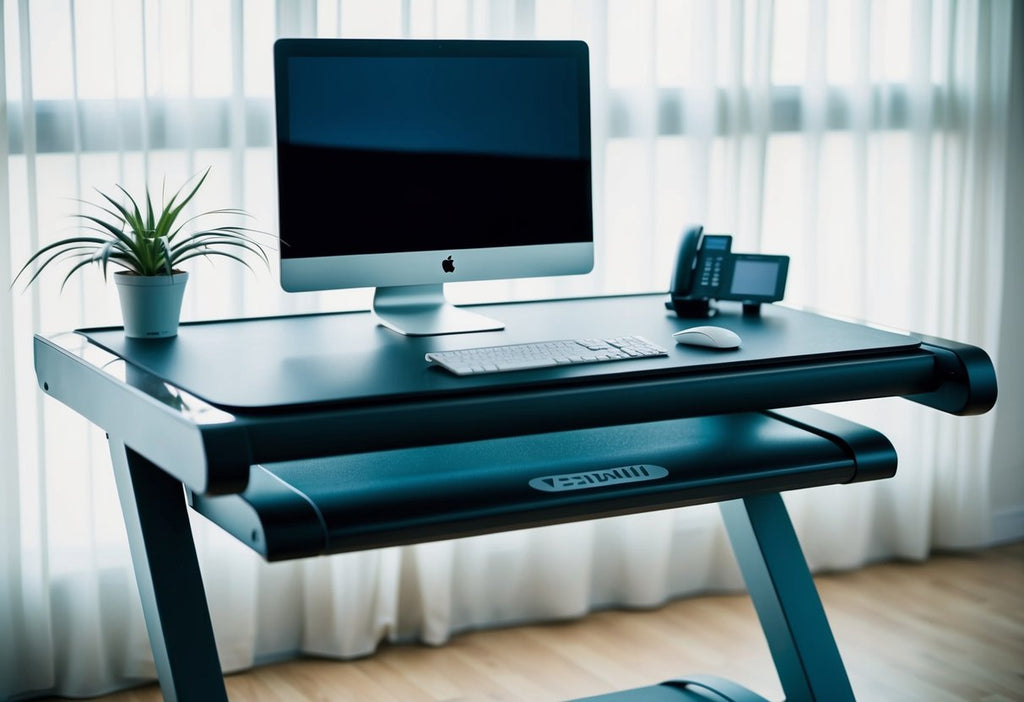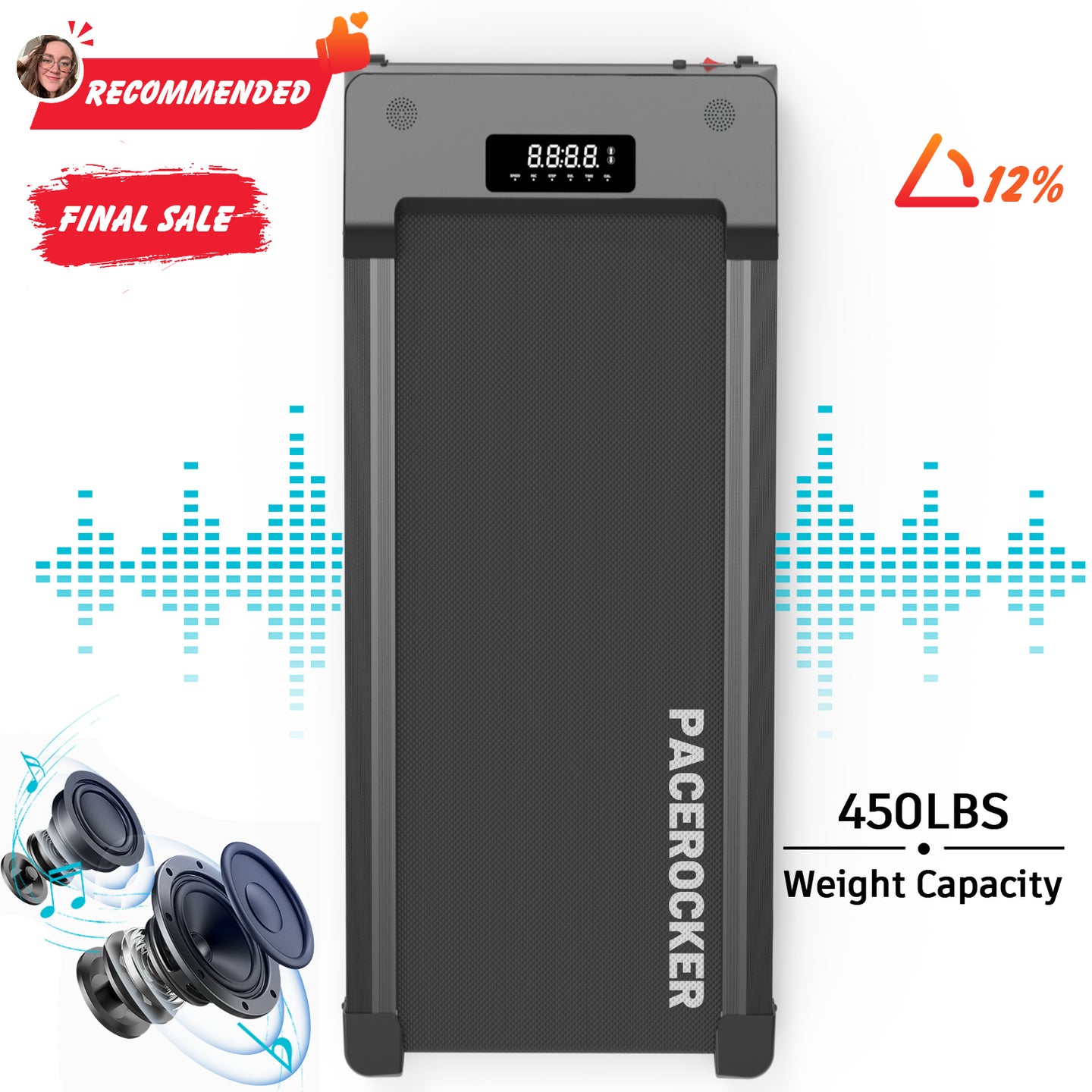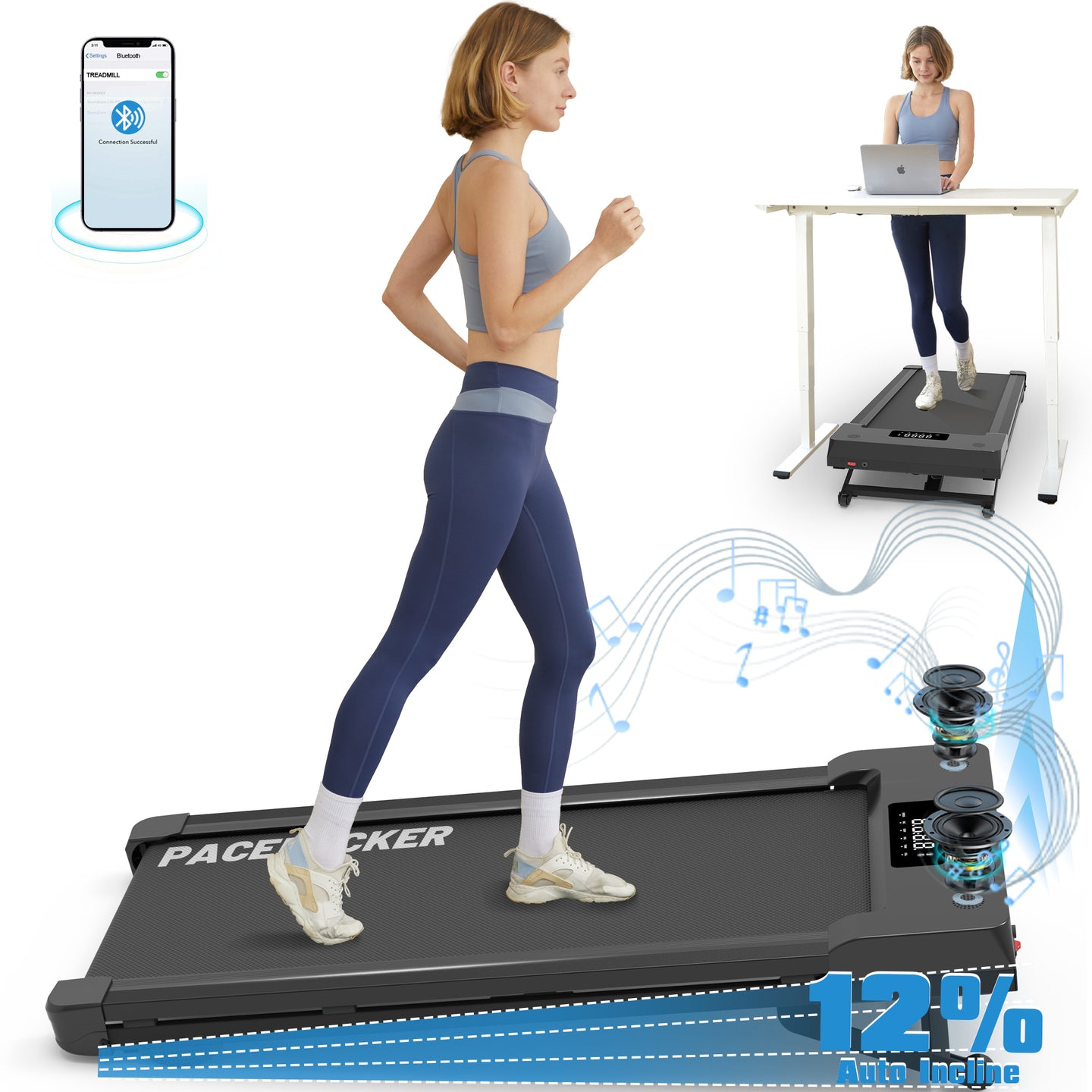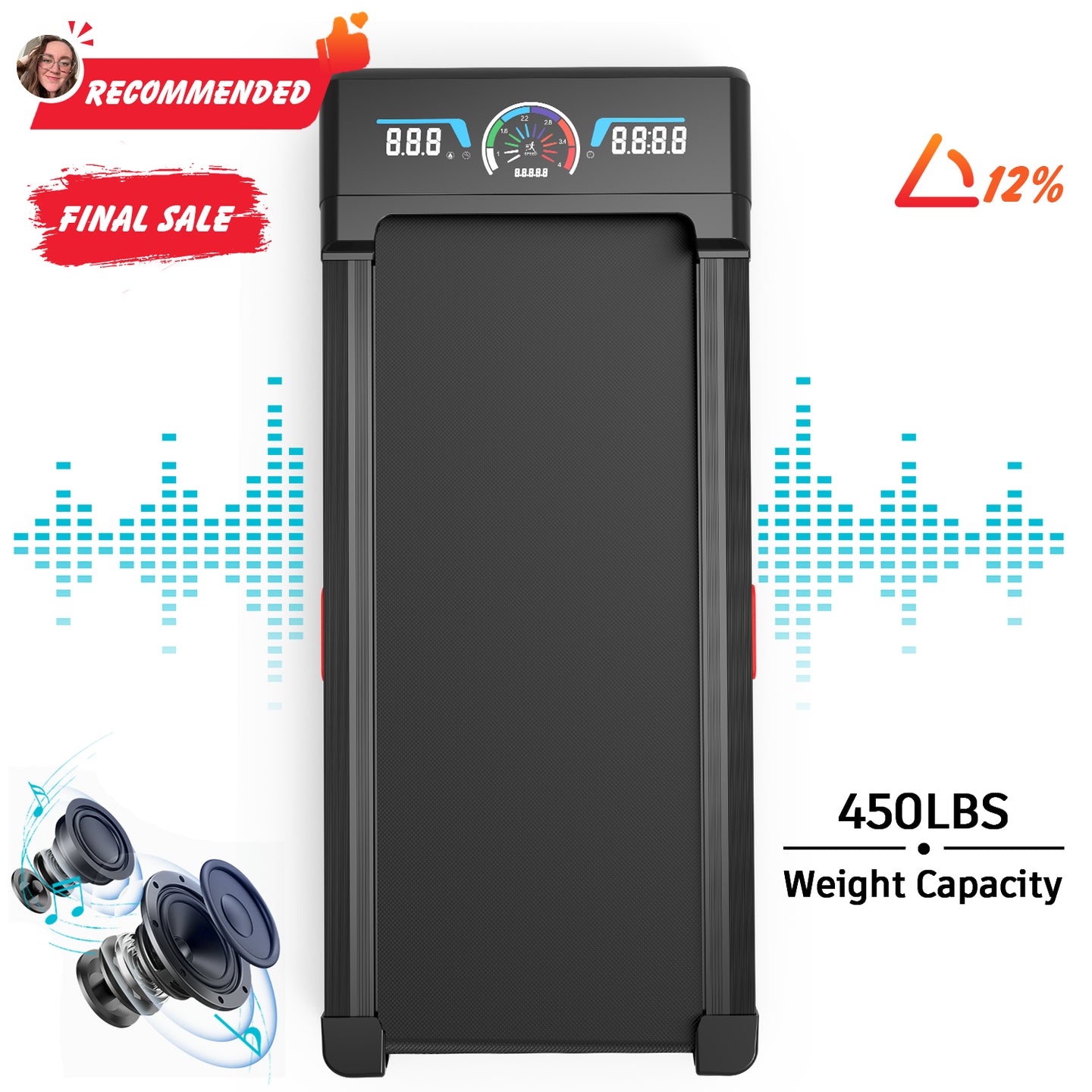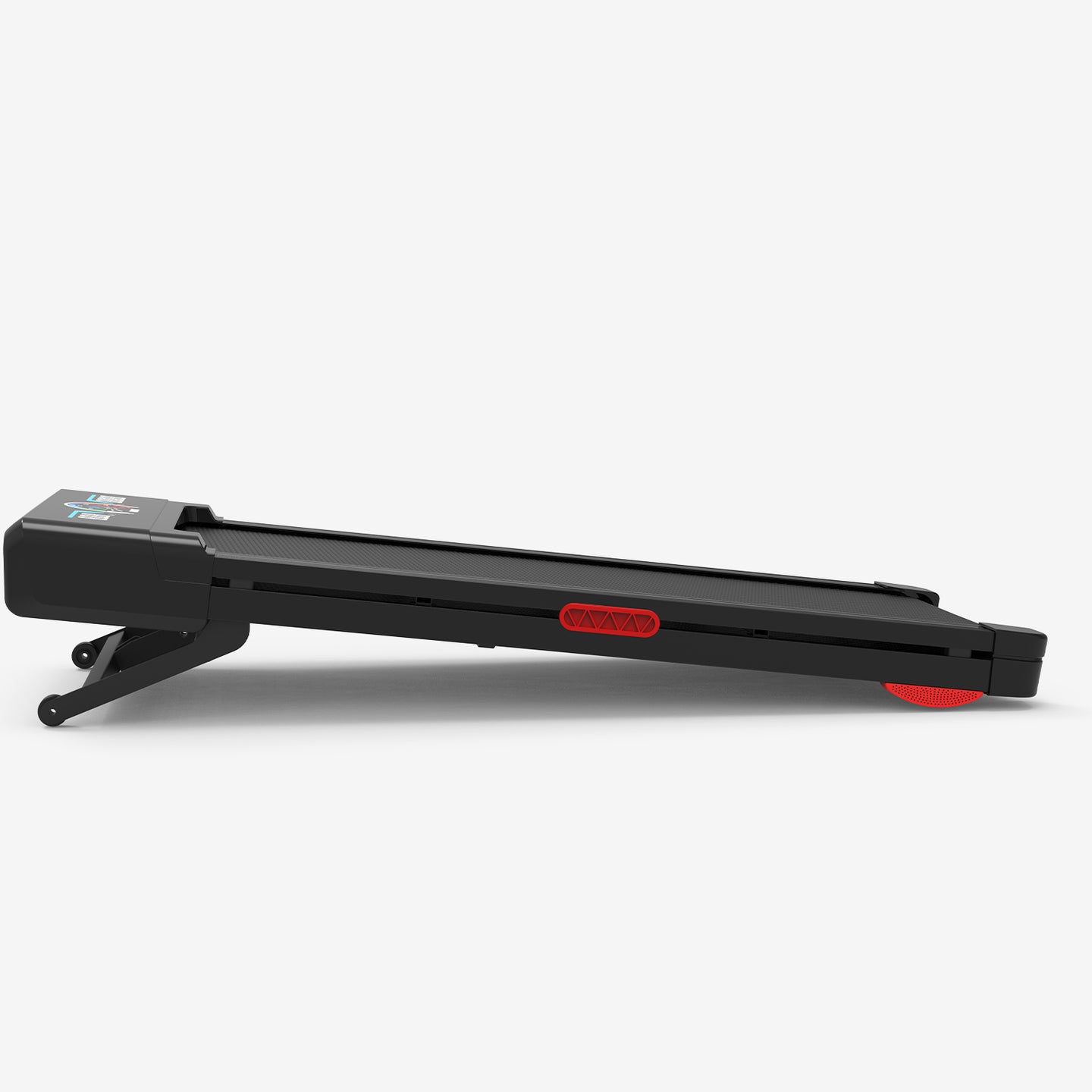How to Maintain and Clean Your Walking Pad Treadmill
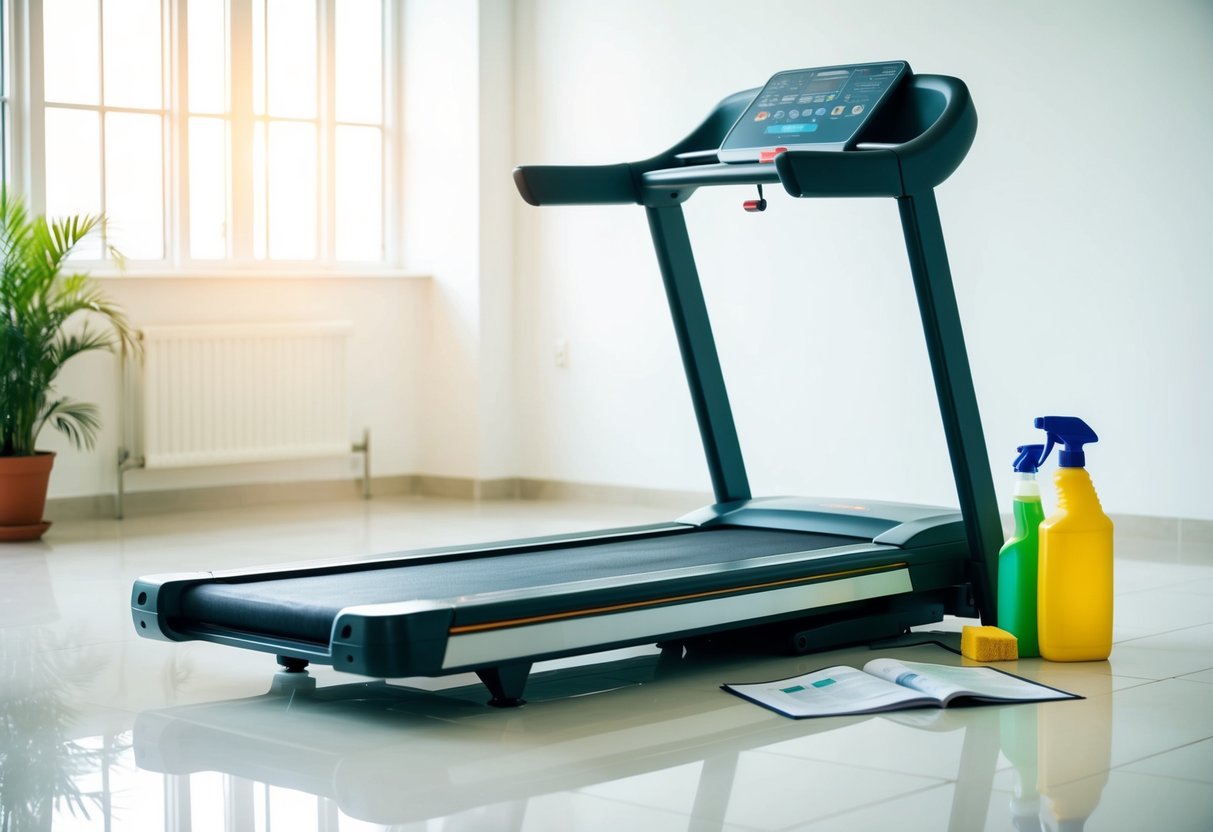
Don’t forget to check out our Pacerocker, Trailviber, and Trailviber Auto Incline walking pad treadmills.
Walking pad treadmills have become a popular choice for home fitness enthusiasts. These compact machines offer a convenient way to stay active, especially for those with limited space.
We've been using walking pad treadmills for years and have learned the ins and outs of their care. Proper upkeep not only ensures smooth operation but also prevents unnecessary wear and tear. From daily wipe-downs to periodic deep cleans, we'll guide you through the steps to maintain your machine.
Let's explore the best practices for keeping your walking pad treadmill clean and well-maintained. We'll cover everything from basic cleaning routines to more advanced maintenance tasks, helping you get the most out of your investment.
Key Takeaways
- Regular cleaning and maintenance extend your walking pad treadmill's lifespan
- Proper care ensures safe and efficient workouts
- Following manufacturer guidelines is crucial for optimal performance
Walking Pad Treadmill Benefits
Walking pad treadmills offer unique advantages for those seeking to improve their fitness and maximize space at home. These compact devices provide an efficient way to stay active while taking up minimal room.
Impact on Health and Fitness
Walking pad treadmills can significantly boost our cardiovascular health. Regular use helps strengthen our heart, lungs, and circulatory system. We'll likely notice improved endurance and reduced risk of heart disease over time.
These devices also aid in weight management. By incorporating daily walks, we can burn calories and maintain a healthy body weight. Many users report increased energy levels and better sleep patterns after consistent use.
Walking pad treadmills offer low-impact exercise, making them ideal for joint health. We can reduce strain on our knees, hips, and ankles while still getting an effective workout.
Space Efficiency
One of the biggest perks of walking pad treadmills is their compact design. We can easily store them under beds or in closets when not in use. This makes them perfect for small apartments or homes with limited space.
Many models feature foldable designs, allowing for quick setup and storage. We can transform any room into a mini gym in seconds. This flexibility means we're more likely to stick to our fitness routines.
The slim profile of walking pad treadmills also means we can multitask. We can place them under standing desks or in front of TVs, allowing us to walk while working or watching our favorite shows.
Pre-Use Checklist
Before stepping onto our walking pad treadmill, we need to ensure everything is in order. A quick check can prevent accidents and keep our equipment in top shape.
Equipment Inspection
We always start by examining the treadmill belt. It should be centered and running smoothly without any signs of wear or fraying. Next, we check the control panel, making sure all buttons and displays are functioning correctly.
We inspect the power cord for any damage or exposed wiring. It's crucial to verify that the emergency stop button is easily accessible and working properly. We also listen for any unusual noises when the treadmill is running at low speed.
Lastly, we ensure the walking surface is clean and free from any objects that could interfere with our workout.
Safety Precautions
We always place our walking pad on a level surface to prevent wobbling or tipping. It's essential to have enough clearance around the treadmill - at least 2 feet on each side and 6 feet behind it.
We keep a towel and water bottle within reach but away from the walking area. Before starting, we familiarize ourselves with the controls, especially the speed adjustment and emergency stop.
We never step on or off the treadmill while it's moving. Instead, we start at the lowest speed and gradually increase it. We also avoid using our phones or other distractions while walking to maintain focus and balance.
Cleaning Routines
Regular cleaning keeps your walking pad treadmill in top shape and extends its lifespan. A consistent maintenance routine prevents dirt buildup and ensures smooth operation.
Daily Cleaning Steps
We recommend wiping down the treadmill belt after each use. Use a slightly damp cloth to remove sweat and dust. Pay special attention to the walking surface and handrails.
Don't forget to clean the console and display. A microfiber cloth works best for these sensitive areas. Avoid using harsh chemicals or excessive water.
Finally, check for any debris around the belt edges. Remove any small objects that might have fallen onto the track.
Weekly Maintenance Tasks
Once a week, we suggest a more thorough cleaning session. Start by unplugging the treadmill for safety. Vacuum around and under the machine to remove dust and lint.
Use a mild soap solution to clean the belt more deeply. Wipe it down with a damp cloth, then dry thoroughly. Inspect the belt for signs of wear or damage.
Clean the motor compartment if accessible. Use a soft brush or vacuum attachment to remove dust buildup. This helps prevent overheating issues.
Lastly, tighten any loose screws or bolts. Check the belt tension and alignment, adjusting if necessary according to the manufacturer's instructions.
Tread Belt Care
Proper maintenance of your walking pad's tread belt is crucial for optimal performance and longevity. Let's explore key aspects of tread belt care to keep your machine running smoothly.
Adjustment and Alignment
We recommend checking your tread belt's alignment weekly. A misaligned belt can cause uneven wear and affect your workout experience. To check alignment, run the walking pad at a slow speed and observe the belt's position.
If it drifts to one side, stop the machine and adjust the rear roller bolts. Turn the bolt on the side the belt is moving towards 1/4 turn clockwise. Test again and repeat if necessary.
Proper tension is equally important. A belt that's too loose will slip, while one that's too tight can damage the motor. To check tension, lift the belt at its center. You should be able to raise it 2-3 inches.
Lubrication Guidelines
Regular lubrication reduces friction between the belt and deck, extending the life of your walking pad. We suggest lubricating every 3 months or 130 miles, whichever comes first.
To lubricate, lift the belt and apply a thin line of silicone-based lubricant across the width of the deck. Run the machine at a low speed for a few minutes to distribute the lubricant evenly.
Avoid over-lubricating, as excess lubricant can cause slipping. Wipe away any excess with a clean cloth. Always use lubricants specifically designed for treadmills to prevent damage to your machine.
Motor and Electronics
Regular maintenance of the motor and electronic components is crucial for optimal performance and longevity of your walking pad treadmill. We'll cover essential care practices to keep these vital parts in top shape.
Dust and Debris Management
Dust and debris can wreak havoc on your treadmill's motor and electronics. We recommend removing the motor cover at least once every three months to clean out accumulated particles. Use a soft brush or vacuum with a brush attachment to gently remove dust from the motor and surrounding areas.
Be cautious around delicate wires and connections. A can of compressed air can help dislodge stubborn dirt in hard-to-reach spots. Wipe down the inside of the motor cover before replacing it.
For external electronics, like the console, use a slightly damp microfiber cloth to clean the surface. Avoid spraying liquids directly onto any part of the treadmill.
Electrical Component Care
Proper care of electrical components ensures safe and efficient operation. Regularly inspect power cords for any signs of wear or damage. Replace frayed or exposed wires immediately to prevent electrical hazards.
Keep the area around your treadmill dry and well-ventilated to reduce moisture exposure. Excessive humidity can corrode electronic parts over time. If you notice any unusual odors or sounds coming from the motor area, unplug the treadmill and consult a professional technician.
We suggest using a surge protector to safeguard against power fluctuations that could damage sensitive electronics. When not in use, unplug your treadmill to conserve energy and protect it from potential electrical surges.
Troubleshooting Common Issues
Walking pad treadmills can occasionally encounter problems. Let's explore some common issues and how to address them effectively.
Noise Reduction
Excessive noise from your walking pad can be frustrating. First, check for loose parts or debris caught in the belt. Tighten any visible screws and remove any foreign objects.
If the noise persists, the belt might be misaligned. We recommend centering it using the adjustment bolts on the rear roller. Turn them equally on both sides until the belt runs smoothly.
Lubrication can also help reduce noise. Apply a thin layer of silicone-based lubricant to the underside of the belt. This not only quiets operation but also extends the life of your machine.
Error Messages
Error codes on your walking pad's display can be confusing. The most common is E01, which typically indicates a communication issue. Unplug the machine for 30 seconds, then reconnect it to reset the system.
E02 often points to motor problems. Check the motor wires for secure connections. If they're intact, the motor might need professional servicing.
E05 usually means the belt is too tight or lacks lubrication. Loosen the belt slightly and apply lubricant as needed. If issues persist, consult your user manual for specific troubleshooting steps or contact customer support.
Long-Term Storage Solutions
Properly storing your walking pad treadmill when not in use helps extend its lifespan and maintain performance. We'll explore ideal storage conditions and the benefits of foldable designs.
Proper Storage Environment
We recommend storing your walking pad in a cool, dry place away from direct sunlight and heat sources. Extreme temperatures can damage electronic components and cause materials to deteriorate. Aim for a storage area with low humidity to prevent rust and mold growth.
Cover the treadmill with a breathable dust cover to keep it clean. Avoid plastic covers, as they can trap moisture. Store it in an upright position if possible to save space and reduce stress on the belt and deck.
Before long-term storage, clean and lubricate the treadmill thoroughly. Disconnect the power cord and store it separately to prevent damage.
Foldable Design Advantages
Many walking pad treadmills feature foldable designs, making them ideal for compact storage. These models typically have a hydraulic folding mechanism for easy lifting and lowering.
Folded treadmills take up significantly less floor space, fitting neatly in closets or under beds. This space-saving feature is especially valuable in smaller homes or apartments.
The folding capability also makes it easier to move the treadmill for cleaning or rearranging your workout space. Some models have built-in wheels for added portability.
When folded, key components are better protected from dust and accidental damage.
Professional Maintenance and Repairs
Regular upkeep is crucial for your walking pad treadmill, but some issues require expert attention. Knowing when to seek help and understanding your warranty can save time and money.
When to Seek Professional Help
We recommend calling in the pros if you notice unusual noises, burning smells, or erratic belt movements. These could indicate serious mechanical problems. Electrical issues, such as flickering displays or sudden shutdowns, also warrant professional inspection.
Don't attempt to fix the motor or electrical components yourself. It's dangerous and may void your warranty. If the treadmill's performance declines despite regular maintenance, it's time to call a technician.
Persistent error messages or failure to start are clear signs you need expert help. We advise scheduling annual check-ups with certified technicians to catch potential issues early.
Warranty and Service Information
Keep your warranty information handy. Most walking pad treadmills come with a 1-3 year warranty. Coverage typically includes parts and labor for manufacturing defects.
Read the fine print carefully. Some warranties may be voided by DIY repairs or using the treadmill for commercial purposes. Register your product promptly to activate the warranty.
Many manufacturers offer extended warranty options. We suggest considering these for added peace of mind, especially for high-end models.
When seeking repairs, use authorized service centers to ensure quality work and maintain warranty validity. Keep all service records and receipts. This documentation can be crucial for future claims or resale value.
Upgrades and Accessories
Walking pad treadmills can be enhanced with various add-ons to improve your workout experience. Let's explore some options to take your walking pad to the next level.
Enhancing Your Walking Pad Experience
We've found several upgrades that can boost your walking pad's functionality. A larger display screen offers better visibility of your stats while exercising. Some models allow for smartphone integration, letting you track your progress or stream entertainment directly on the treadmill.
Noise reduction pads are a game-changer for those living in apartments or shared spaces. They significantly dampen the sound of your footsteps, making your workouts more neighbor-friendly.
For added comfort, consider investing in an anti-fatigue mat. It provides extra cushioning underfoot, reducing strain on your joints during longer walking sessions.
Compatible Accessories
We recommend exploring accessories that complement your walking pad treadmill. A tablet holder is perfect for catching up on shows or joining virtual classes while you walk. It securely attaches to your treadmill, keeping your device at eye level.
Resistance bands can be a great addition to your workout routine. They allow you to incorporate upper body exercises while walking, maximizing your fitness gains.
Don't forget about maintenance supplies! A silicone lubricant kit helps keep your treadmill belt running smoothly, extending the lifespan of your machine. A cleaning kit with microfiber cloths and gentle cleansers will keep your walking pad looking and functioning like new.
Final Thoughts
Maintaining and cleaning your walking pad treadmill is crucial for its longevity and performance.
Regular upkeep prevents wear and tear, ensuring smooth operation for years to come. By following these guidelines, you'll enjoy a safer, more effective workout experience.
Remember to clean your treadmill after each use and perform deeper cleaning weekly. This simple habit goes a long way in preserving your investment.
Don't forget to lubricate the belt as recommended by the manufacturer. It's a small step that makes a big difference in the treadmill's functionality.
Lastly, always prioritize safety. Unplug the machine before cleaning or maintenance, and never use harsh chemicals that could damage the components.
Frequently Asked Questions
Proper maintenance and troubleshooting are essential for keeping your walking pad treadmill in top shape. Let's address some common questions to help you care for your equipment.
What's the best way to lubricate my walking pad to ensure optimal performance?
We recommend using a silicone-based lubricant specifically designed for treadmills. Apply a thin layer along the center of the walking belt, spreading it evenly across the width. Run the treadmill at a low speed for a few minutes to distribute the lubricant.
How often should I lubricate my walking pad to maintain smooth operation?
For most walking pads, lubrication every 3 months or 130 miles of use is ideal. However, check your user manual for specific recommendations, as some models may require more frequent lubrication.
What are the steps to properly clean the motor of my walking pad treadmill?
First, unplug the treadmill. Remove the motor cover and use a vacuum to remove dust and debris. Wipe down the motor and surrounding area with a dry cloth. Avoid using liquids near electrical components.
What could be causing my walking pad treadmill to suddenly stop and how can I fix it?
A sudden stop could be due to a loose power connection, worn belt, or faulty circuit board. Check the power cord and ensure it's securely plugged in. Inspect the belt for signs of wear. If these aren't the issue, consult a professional technician.
How do I address and fix a squeaking noise coming from my walking pad?
Squeaking often indicates a need for lubrication or belt adjustment. Apply lubricant as directed in your manual. If the noise persists, check the belt tension and alignment, adjusting as needed.
How should I go about cleaning the mat of my treadmill for a fresh and hygienic workout environment?
Wipe down the mat after each use with a damp cloth. For a deeper clean, use a mild soap solution and soft brush to gently scrub the surface. Avoid harsh chemicals that could damage the belt material.
Discover essential care tips to maintain and clean your walking pad treadmill, ensuring its longevity and optimal performance. Proper maintenance keeps your workouts safe and efficient.


